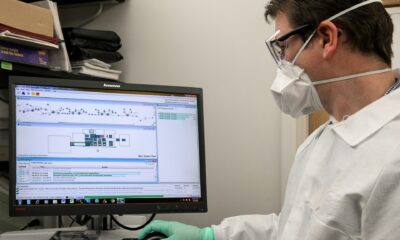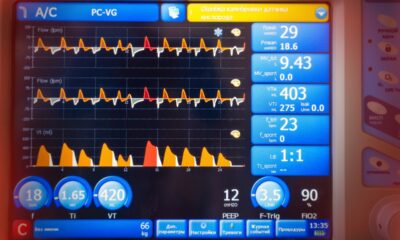Biotech
Digital Health: An Opportunity to Attract 70% for Hospitals and 30% for Mutual Insurance Companies
In the case of the European market, countries like Denmark are also implementing practices to improve digital health. The Nordic country has been able to successfully resolve the integration and interoperability of health systems by having a national health portal, which automatically consolidates patient data, including their medical history and prescriptions.

Health systems around the world have long been relying on technological innovation to improve healthcare: digital health in the focus
McKinsey’s latest report, “Scaling national e-health: best practices from around the world,” analyzes how these solutions are being adopted to improve national healthcare in different parts of the world. Specifically, the document points out that the potential value of using digital health technologies in fourteen countries is equivalent to 8% or 12% of total healthcare spending within each country.
Of this estimated value published by the consulting firm, around 70% could be captured by hospitals and health professionals, while the remaining 30% could be an opportunity for health insurers. Configuration, expansion and improvement of benefits are some of the strategic actions that should be implemented to generate this scenario.
Adopting digital health practices requires a multifaceted approach that includes data integration, incentives for healthcare professionals, user-centered design, sustainable business models, change management capabilities, and rigorous monitoring and evaluation of the landscape.
Some African countries are being an example of this. In the case of Nigeria, the mDoc platform has established a robust business model with two revenue streams: one oriented towards service fees paid by health maintenance organizations and employers, and another based on monthly subscriptions from users. This approach ensures long-term viability, beyond reliance on donor funding, resulting in financial sustainability, a critical challenge for digital health solutions .
Digital health needs a user-centered, sustainable model, with data integration and incentives for professionals
The effectiveness and scalability of digital solutions largely depend on the users’ ability to manage them. The report exemplifies this with the case of Burkina Faso, which has transferred knowledge on the CommCare platform, allowing local organizations to manage the solution autonomously. This training and change management process is crucial for large-scale adoption.
User-centered design is another critical component . In countries like Uganda and Kenya, organizations like Living Goods and Medic designed digital health apps after conducting field research to better understand workflows and end-user needs. This approach not only ensures high adoption, but also improves the user experience, making digital solutions more intuitive and accessible.
In the case of the European market, countries like Denmark are also implementing practices to improve digital health. The Nordic country has been able to successfully resolve the integration and interoperability of health systems by having a national health portal, which automatically consolidates patient data, including their medical history and prescriptions.
This platform, which is mandatory for all health professionals, ensures a high degree of transparency and security, allowing patients to access a record of all data requests made by authorized health professionals.
Using different technologies for national health represents between 8% and 12% of a country’s medical spending
Denmark is also an example of the remuneration that professionals receive when using digital tools for health. The country’s doctors receive an annual bonus to invest in digital health solutions and enjoy faster reimbursements if they are connected to the national health infrastructure. This combination of financial incentives and legal mandates achieved 100% adoption of the electronic health records system.
Finally, monitoring and evaluation are crucial to adapt solutions to changing needs and to build trusting relationships with users and governments. Rapid and continuous evaluations allow digital platforms to be adjusted and improved, ensuring they remain relevant and effective.
__
(Featured image by National Cancer Institute via Unsplash)
DISCLAIMER: This article was written by a third party contributor and does not reflect the opinion of Born2Invest, its management, staff or its associates. Please review our disclaimer for more information.
This article may include forward-looking statements. These forward-looking statements generally are identified by the words “believe,” “project,” “estimate,” “become,” “plan,” “will,” and similar expressions. These forward-looking statements involve known and unknown risks as well as uncertainties, including those discussed in the following cautionary statements and elsewhere in this article and on this site. Although the Company may believe that its expectations are based on reasonable assumptions, the actual results that the Company may achieve may differ materially from any forward-looking statements, which reflect the opinions of the management of the Company only as of the date hereof. Additionally, please make sure to read these important disclosures.
First published in PlantaDoce. A third-party contributor translated and adapted the article from the original. In case of discrepancy, the original will prevail.
Although we made reasonable efforts to provide accurate translations, some parts may be incorrect. Born2Invest assumes no responsibility for errors, omissions or ambiguities in the translations provided on this website. Any person or entity relying on translated content does so at their own risk. Born2Invest is not responsible for losses caused by such reliance on the accuracy or reliability of translated information. If you wish to report an error or inaccuracy in the translation, we encourage you to contact us

-

 Biotech53 minutes ago
Biotech53 minutes agoSalmoss Biotech: Turning Salmon Waste Into Breakthroughs in Regenerative Medicine
-

 Markets2 weeks ago
Markets2 weeks agoRice Market Rebounds from Oversold Lows Amid Weak Demand
-

 Crypto7 days ago
Crypto7 days agoEthereum in 2025: Volatility, Maturity, and Strategic Renewal
-

 Africa2 weeks ago
Africa2 weeks agoMorocco’s Rising Country Risk Profile Boosts Investor Confidence
























